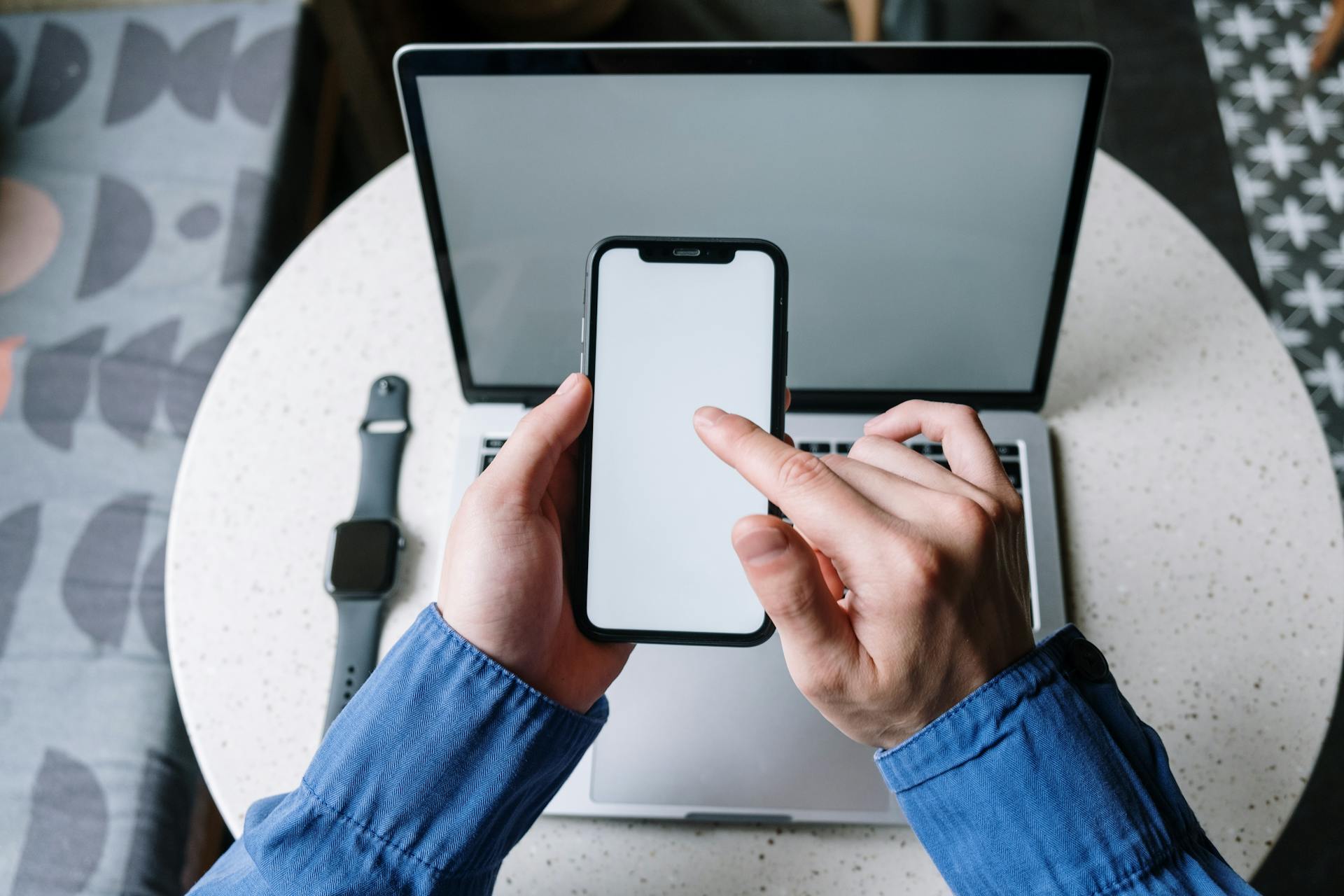
To accept credit card payments on your iPhone, you'll need to download a payment processing app, such as Square or PayPal Here.
These apps allow you to accept credit card payments in person, using your iPhone's camera to scan the card, or by manually entering the card information.
You'll also need to set up a merchant account with the payment processor, which will provide you with a unique account number and other details needed to process transactions.
This process is typically free or low-cost, and can be completed in a few minutes.
Additional reading: Credit Card Payment Not Showing up in Bank Account
Benefits of
Accepting credit card payments on your iPhone can be a game-changer for your business. With the right tools, you can simplify transactions, improve cash flow, and create a better customer experience.
Location independence is a major advantage of mobile payments. You can accept payments anywhere, whether you're a street vendor, freelancer, or home service provider. This flexibility is particularly valuable for businesses without a fixed location.

By processing payments quickly, you can improve your cash flow and get paid faster. Payments are typically settled within one business day, which is much faster than traditional methods like paper checks.
Offering a variety of payment methods, including mobile payments, can cultivate the kind of payment experience customers want. This can lead to repeat business and a loyal customer base.
Mobile payment systems can also streamline operations by integrating with your other systems and infrastructure. They can automatically update inventory and sales records, reducing manual data entry and the potential for errors.
Here are some of the key benefits of accepting credit card payments on your iPhone:
- Location independence
- Improved cash flow
- Better customer experience
- Increased efficiency
- Security
- Reduced hardware costs
- Contactless transactions
- Data collection and analytics
Setting Up
Once you've got your merchant account set up, it's time to start accepting credit card payments on your iPhone.
To do this, you'll need to download the correct payment provider app, which usually offers POS (point of sale) features. This will allow you to start processing transactions on your phone.
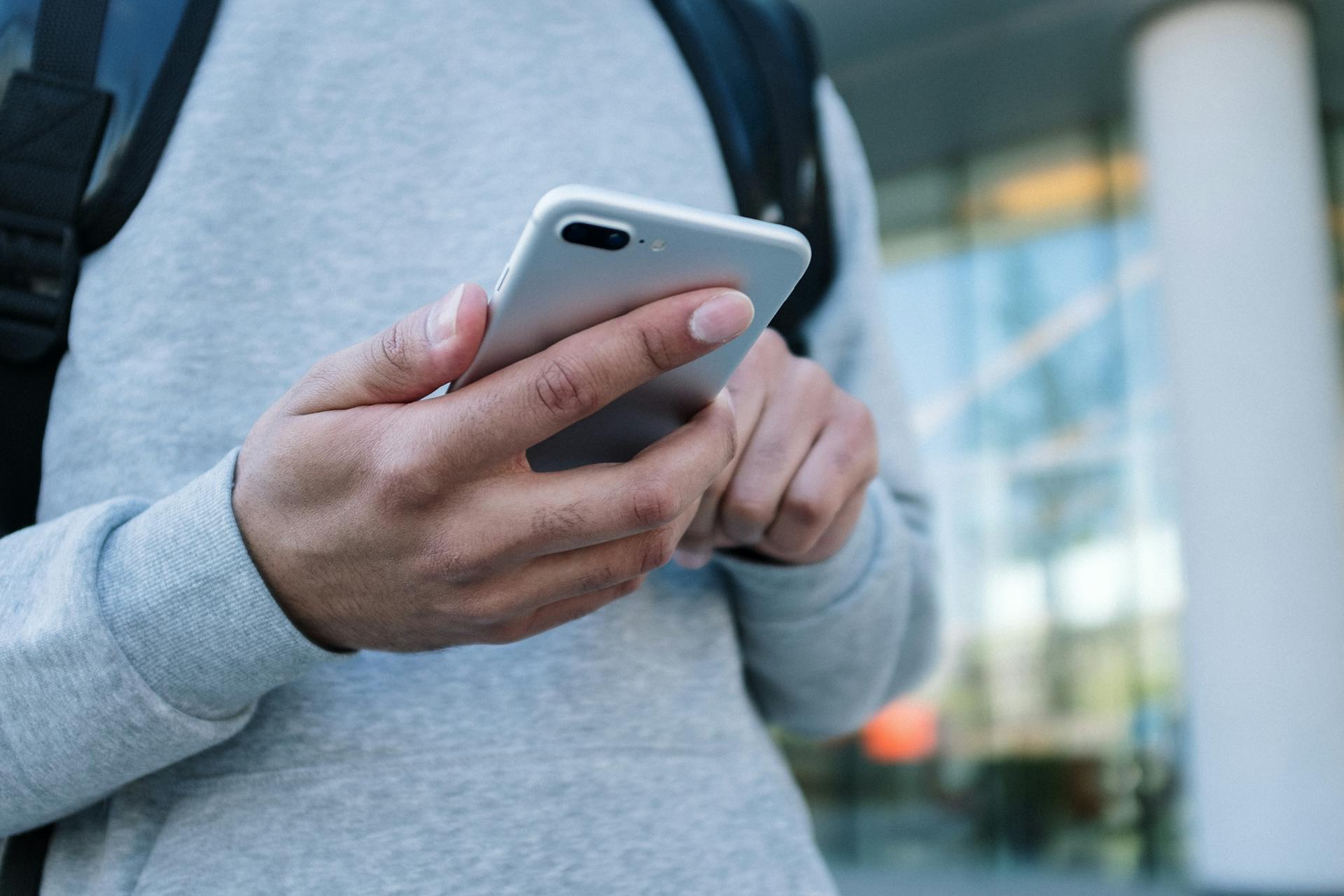
Most modern payment providers have their own apps, so make sure to download the right one for your business. You can usually find this information on the provider's website or by contacting their support team.
After downloading the app, you'll need to attach your hardware to your mobile device. This might include a card reader or a mobile terminal. The specific steps may vary depending on your provider, so it's a good idea to ask for guidance during the onboarding process.
Here are some common ways to get started:
- Prebuilt checkout
- Libraries and SDKs
- App integrations
Payment Methods
You can accept credit card payments on your iPhone using various methods, including Payment Links and mobile websites or apps.
Payment Links is a convenient option that allows businesses to create a full payment page in a few minutes without any coding. You can send the payment link directly to customers via SMS or email.
Customers can click on the link and pay directly from their phone or other device, entering their card details or using a digital wallet like Apple Pay or Google Pay.

To use Payment Links, you'll need to create a payment link for a specific product or service from your Stripe Dashboard. You'll then receive a URL that you can send to your customers.
Mobile websites or apps are another option for accepting credit card payments on your iPhone. Ensure your website or app is set up to accept mobile payments, which is easy if you work with Stripe.
Customers can select their desired products or services, add them to their cart, and proceed to checkout. At checkout, they can enter their card details or select a digital wallet option to complete their purchase.
Here are the basic steps to follow for each method:
- For Payment Links: Create a payment link, send the link to customers, and they'll pay directly from their device.
- For mobile websites or apps: Ensure your website or app is set up to accept mobile payments, and customers can select their products, add them to their cart, and proceed to checkout.
Security and Safety
Accepting credit card payments on your iPhone can be a convenient and secure way to do business. Mobile payments offer the necessary security you need to ensure your small business remains safe from threats.
Encryption technology protects sensitive cardholder data at the point of swipe, tap, or manual entry, making it a safer option than similar digital payment methods.
Discover more: Business Credit Cards That Don't Report to Personal Credit
Mobile card readers require a customer's mobile wallet or physical card to be present for the transaction, which adds an extra layer of security.
To take credit or debit card payments with your smartphone is not only reliable and straightforward, but also completely safe. However, there are some additional steps you can follow to give both yourself and your customers further peace of mind.
Here are some steps to take:
- Encrypt all stored customer payment data.
- Take time to regularly monitor your security processes.
- Make sure your payment solution provider is following the most up-to-date PCI-DSS (Payment Card Industry Data Security Standard) guidelines.
Mobile payments come out on top when it comes to security features, with developers consistently introducing new fraud-prevention tools to assist merchants.
Types and Options
To accept credit card payments on your iPhone, you have several options to choose from. You can use mobile websites or apps, which allow customers to pay directly on your mobile-optimized website or through your business's app.
There are two main methods to consider: using a hardware or software solution to accept credit card payments on your phone, or enabling mobile payments through your website or app. Stripe's payment processing capabilities can be integrated into your website or app using their APIs and SDKs.
Explore further: Apps for Credit Cards
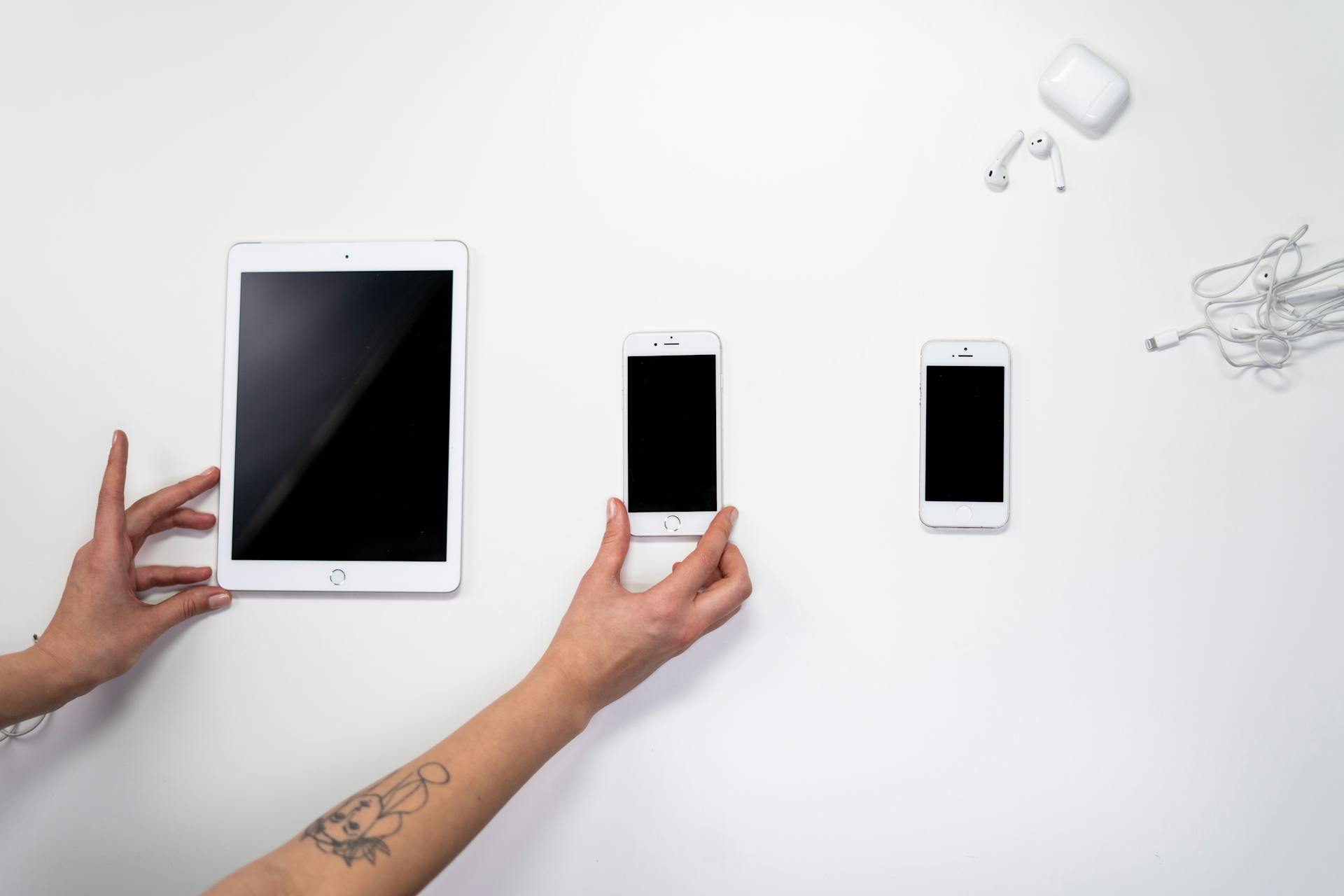
Here are the basic steps involved in using mobile websites or apps to accept credit card payments:
- Ensure your website or app is set up to accept mobile payments.
- Customers select their desired products or services and add them to their cart, and then they proceed to checkout.
- At checkout, customers can enter their card details or select a digital wallet option to complete their purchase.
Apps to Use
There are several apps that can help you accept mobile payments, including Apple Pay, Google Pay, and Samsung Pay. These apps use near-field communication (NFC) technology to facilitate contactless transactions.
Mobile payment apps are convenient and accessible, allowing customers to attach their credit or debit cards and make payments by touching their cellphones or smartwatches on the payment terminal. The only thing businesses need to do is ensure their point-of-sale system is compatible with mobile payment applications.
Stripe provides easy-to-use APIs and SDKs that developers can use to integrate Stripe's payment processing capabilities into your website or app. This makes it easy to set up mobile payments on your website or through your business's app.
Some popular mobile payment apps include iZettle, SumUp, Square, and PayPal Here, but be aware that you may need to purchase additional hardware, such as a card reader, to take face-to-face payments. With SimplyPayMe App, you can download the application and take payments without needing any additional hardware.
Here are some popular mobile payment apps to consider:
Android vs
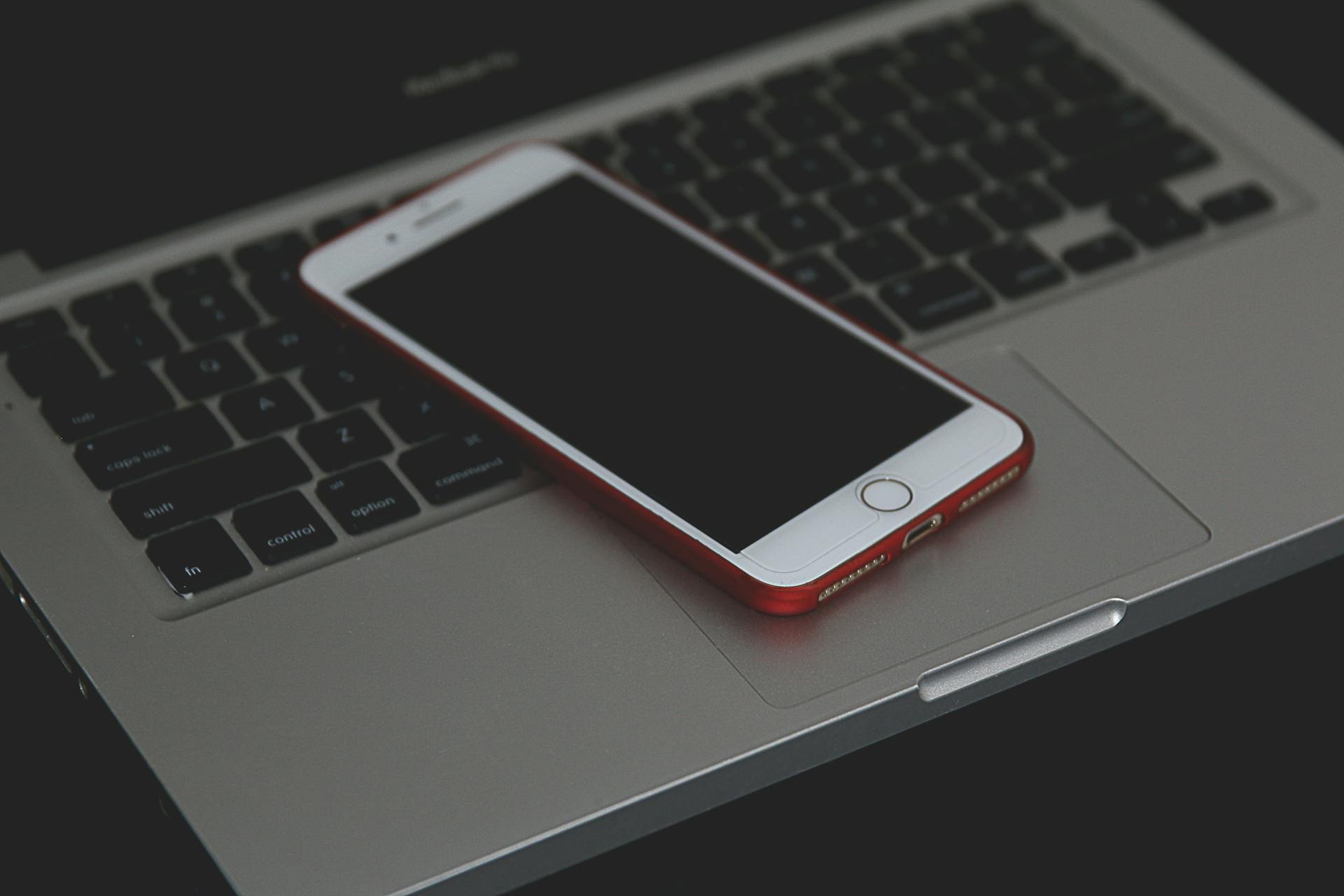
Accepting credit card payments on Android and iPhone is essentially the same process.
Many mobile card readers are compatible with both brands. You can use the same card reader on your Android and iPhone devices.
If you're using Bluetooth, both Android and iPhone will work. However, if you're using a Bluetooth connection, you may need to use different connector types, such as a USB Micro-B connector, depending on your device.
Check this out: Chase Bank Credit Card Credit Score
Android Comparison
If you're choosing an Android credit card reader, you'll have a wide range of brands to pick from.
You can compare these options according to price, features, credibility, and device compatibility.
The Android platform can handle huge workloads and is comparatively less expensive than iOS.
This means you can find a credit card reader that fits your specific needs and budget.
Some providers only cater to one operating system, so be sure to check compatibility before making a decision.
For a straightforward, mobile-only solution, SimplyPayMe is available on both the Apple and Android app stores.
Providers and Services
Stripe is a popular Merchant Account Provider that offers a user-friendly way to accept credit card payments on your iPhone. They have a simple sign-up process that takes just minutes, with no fees involved.
Stripe does not charge a monthly fee, which is a big advantage over many of their competitors. This means you can start using their platform to accept payments right away.
Stripe offers integrated per-transaction pricing with no hidden fees, making it easy to manage your payments. Their attractive and easy-to-use interface allows you to easily manage all your payments from the Stripe Dashboard.
If you choose Stripe as your Merchant Account Provider, it's a good idea to choose a Stripe Verified Partner app to complete the software needed to accept credit cards with your phone. Stripe works with Charge as a Stripe Verified Partner, ensuring compatibility and a smooth transaction process.
Many businesses, including small businesses, use Stripe's software to accept payments and manage their business online. They offer affordable, competitive rates, making them a great option for businesses of all shapes and sizes.
For your interest: Give Send Go Fees
Reader

To get started with accepting credit card payments on your iPhone, you'll need a mobile card reader. You can choose between a Stripe Reader or a mobile card reader that connects to your phone via Bluetooth or a cord.
Stripe Reader is a popular option that allows you to accept card payments by swiping, inserting, or tapping a card. To set up a Stripe Reader, you'll need to order it from the Stripe website, connect it to your phone via Bluetooth, and follow the instructions in the Stripe app.
Mobile card readers, on the other hand, transform your iPhone into a compact POS system. They can accept various payment methods, including chip, swipe, and contactless payments. Most mobile card readers connect to your phone via Bluetooth or a cord.
Here are the basic steps to set up a mobile card reader:
- Download the correct app from your payment provider.
- Attach your hardware to your iPhone.
- Follow the instructions in the app to set up your reader.
Most modern payment providers have smartphone apps that offer POS features. These apps can help you send receipts, store sensitive data, and manage transactions. The process is usually simplified with a POS app that allows you to upload products and services directly to the app.
Cost
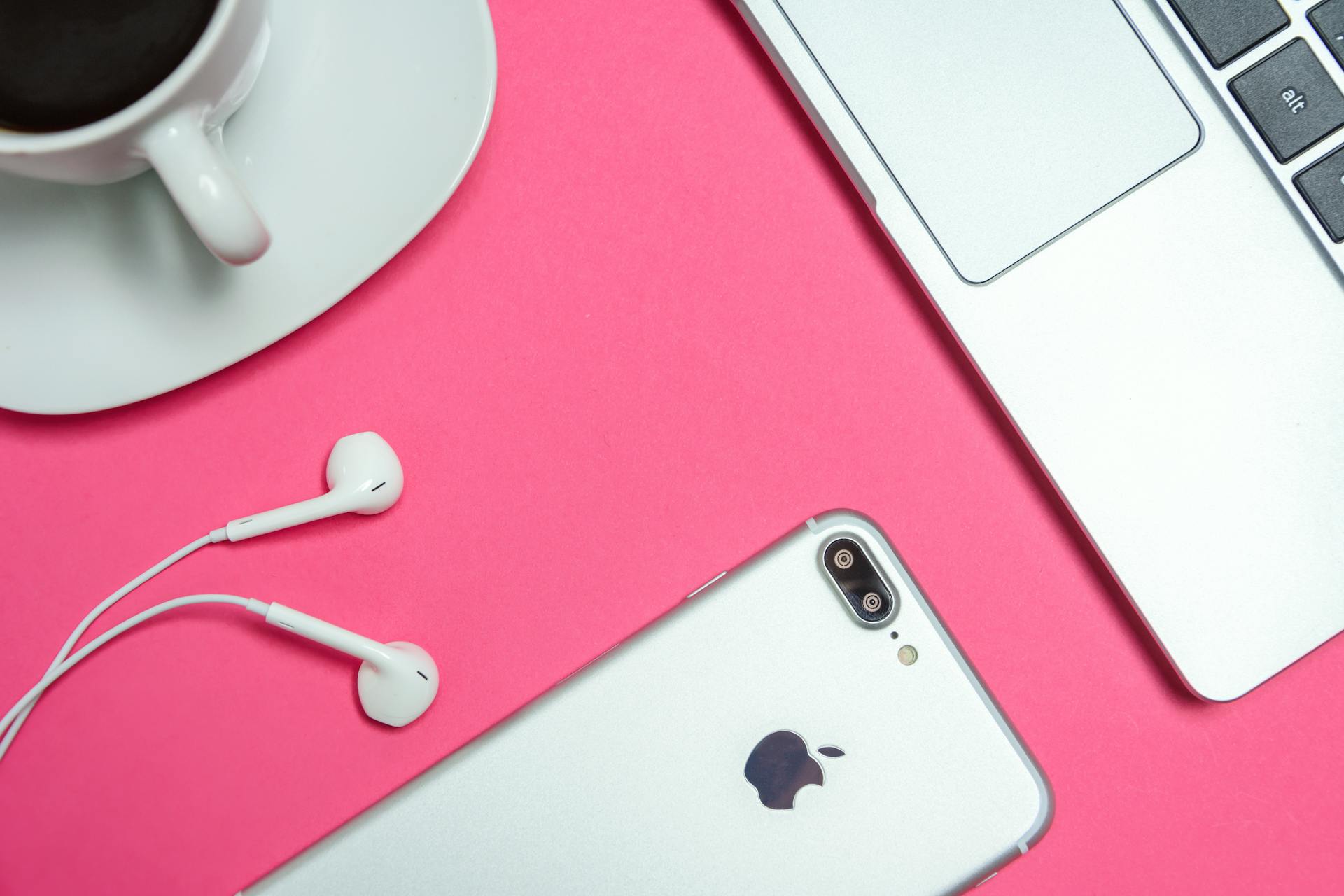
Accepting credit card payments on your iPhone can be a convenient and efficient way to get paid, but it's essential to understand the costs involved.
The cost of accepting payments using a phone can vary widely based on the provider you choose.
Many mobile payment providers don't charge an up-front fee for setting up your account or providing a card reader that connects to your phone. However, some providers offer more advanced equipment for an additional cost.
Transaction fees are based on a percentage of each sale. For example, Stripe charges 2.9% + 30¢ per successful card charge for online transactions.
Card-not-present transactions, also known as “keyed-in transactions,” are completed remotely without processing a physical card via a card reader or terminal. If you need to manually type in a card number instead of swiping, dipping, or using a contactless payment method, the fee is typically higher due to increased fraud risk.
Recommended read: Charge Card vs Credit Cards
Some providers charge a monthly fee, which could cost $20–$100 or more per month. This usually comes with additional features such as advanced analytics, inventory management, and customer loyalty programs.
If a customer disputes a charge and it results in a chargeback, the provider might charge the business a fee—usually around $15–$25 per incident.
Here are some typical costs associated with popular mobile payment providers:
- Setup fees: Some providers offer more advanced equipment for an additional cost.
- Transaction fees: Stripe charges 2.9% + 30¢ per successful card charge for online transactions, while in-person payments conducted with Stripe Terminal are subject to rates of 2.7% + 5¢ per transaction.
- Card-not-present transaction fees: Stripe’s fees on cards entered manually in the Stripe Dashboard increased by 0.5%—from 2.9% + 30¢ to 3.4% + 30¢—for US-based businesses on standard-pricing plans.
- Monthly fees: Some providers charge $20–$100 or more per month.
- Chargeback fees: Providers might charge the business a fee—usually around $15–$25 per incident.
- Fees for additional services: You may incur additional costs for add-ons such as payroll services, ecommerce integration, appointment scheduling, or subscription management.
Customer Information
To accept credit card payments on your iPhone, you'll need to gather customer information. This includes asking for their name, email address, and phone number to complete the transaction.
You can accept mobile payments from customers in-person or remotely, depending on your business model. In-person payments are ideal for brick-and-mortar stores, while remote payments are better suited for online businesses.
Make sure to store customer information securely, as required by payment processors like Apple Pay and Google Pay. This will help you comply with data protection regulations and maintain a positive customer experience.
In-person payments also require you to ask for a customer's billing address, which is necessary for processing credit card transactions.
Small Business and Freelancers
As a small business owner or freelancer, you're in luck because there are mobile POS systems designed specifically for low-volume businesses like yours. These systems are perfect for accepting credit card payments on the go, and you can even use them to accept payments on the spot for jobs like music performances or home service work.
You can use your phone to accept payments in person, or send a payment request to your client and have all the details of the payment saved on your payment processing system. This makes it easy to manage invoices, payments, and accounting, and it's a game-changer for your business.
Here are some examples of businesses that can benefit from accepting credit card payments on their phone:
- Musicians and performers
- Home service providers
- Freelancers and creatives
- Contractors, such as electricians, plumbers, and builders
These businesses often work on high-value jobs, and accepting credit card payments on the spot can make the payment process much smoother.
What Contractors Involve
Contractors who work on high-value jobs often face challenges with payment, but using a mobile payment system can be a game-changer. You can accept in-person payments and close the job on the spot, or send out a digital payment request to the client's email or phone number.
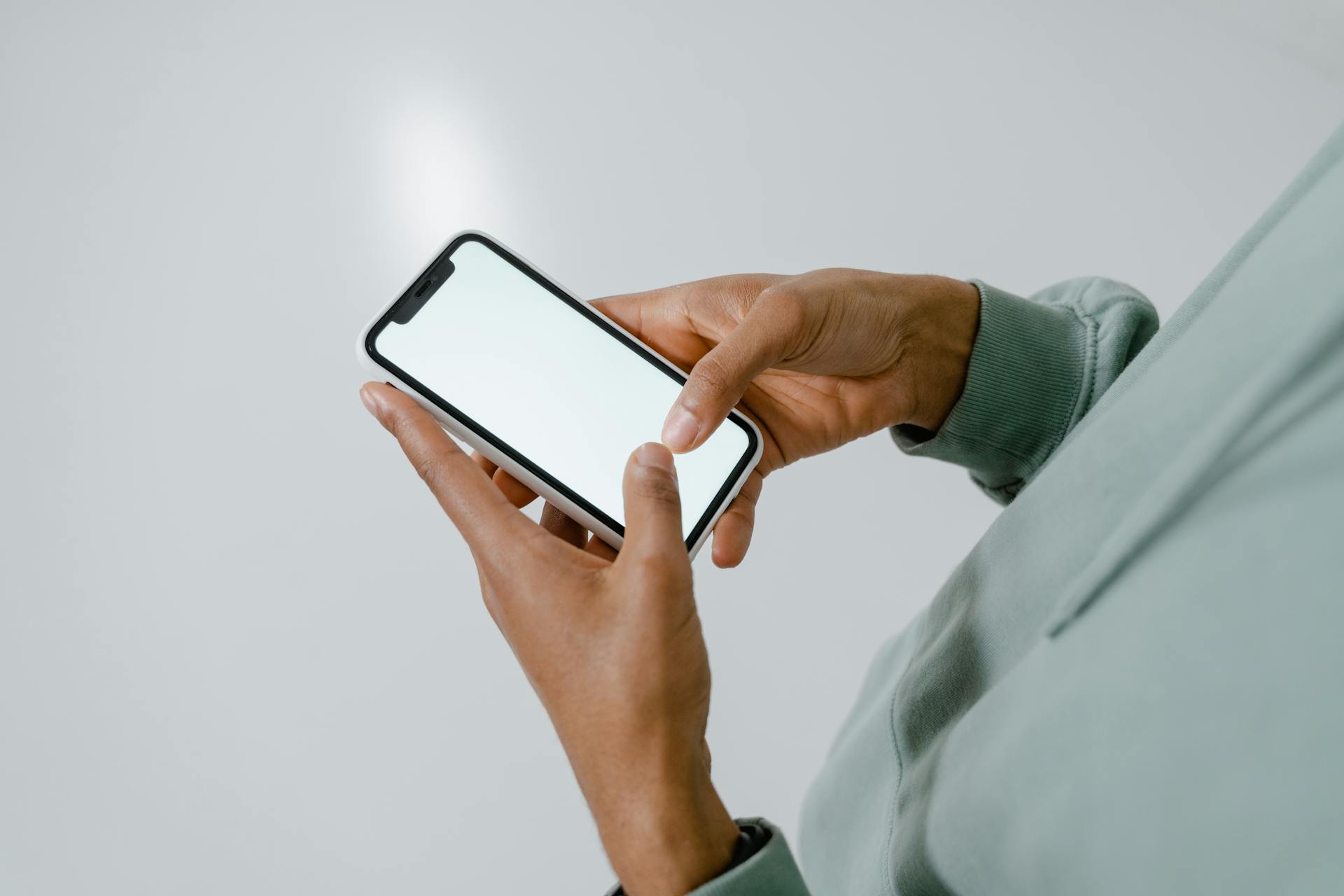
Many contractors, including electricians, plumbers, and builders, can benefit from this system. It's not just for small jobs either - even high-end contractors can use it to manage invoices and payments.
Using a mobile payment system means you can spend less time on tedious accounts and more time on the important things, like finding new clients or improving your craft. This can be especially helpful for contractors who work on multiple locations simultaneously.
Restaurants and cafes can also reap the rewards of this payment system, making it a versatile option for many types of businesses.
Recommended read: Echeck Payment Processing Time
Customer Information
You can accept customer payments on a phone in several ways, and it's essential to have their information on hand.
Accepting customer payments on a phone can happen in several ways, and it's crucial to gather their information before processing the payment.
To accept in-person mobile payments, you need to have a mobile payment processor or a point-of-sale system that allows contactless payments.
Check this out: Building Credit without Credit Cards

Having a mobile payment processor or a point-of-sale system that allows contactless payments can make transactions faster and more convenient for customers.
For remote payments, you can use online payment gateways or mobile payment apps that allow customers to send payments directly to your account.
Gathering customer information is also essential for remote payments, as it helps you track payments and communicate with customers if needed.
Receiving for Freelancers
Receiving payments as a freelancer can be a breeze with the right tools. You can use a mobile payment system to accept credit card payments on your phone, making it easy to get paid on the spot.
Many freelancers work in-person, like musicians or performers, and can use their aPOS system to accept payments on the spot. This eliminates the need to write up an invoice and send it to clients later.
You can also send a payment request to your client and have all the details of the payment saved on your payment processing system. This makes it easy to keep track of payments and send reminders if needed.
Broaden your view: Easy Credit Cards to Get for Bad Credit
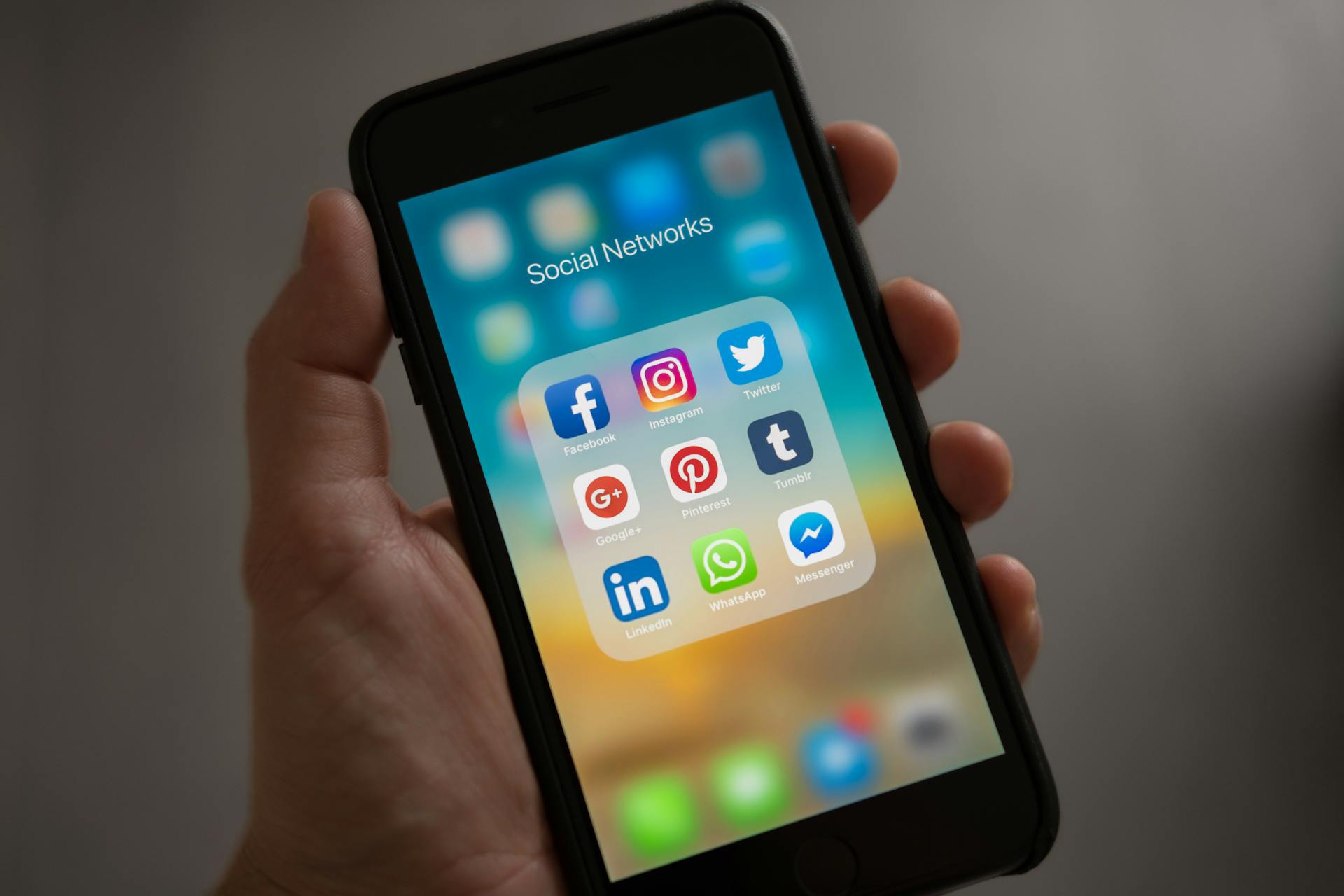
The benefits of accepting payments with a phone are numerous, including increased convenience and speed. With just a few taps, you can process payments, email receipts to clients, and have the funds in your bank.
Here are some types of freelancers who can benefit from mobile payments:
- Musicians and performers
- Home service providers
- Independent businesses
- Freelance consultants
- Fitness coaches
These types of businesses can use mobile payments to provide an easier, more convenient transaction experience for clients. By accepting credit card payments on your phone, you can stay competitive in today's fast-paced, digital-first environment.
How to Use
To use Tap to Pay on iPhone, ensure your device is compatible with Apple's Tap to Pay feature. This is a crucial step to avoid any technical issues.
You'll also need to determine how you'll be taking mobile payments. Fortunately, there are options available that will make the process simple.
Here are the basic steps to process a payment using Tap to Pay on iPhone:
- Ensure your device is compatible with Apple’s Tap to Pay feature.
- Customers can pay by holding their card or Apple Pay–enabled device near the top of your iPhone.
- Tap to Pay on iPhone will automatically process the payment.
Alternatively, you can use other hardware or software to accept credit card payments on your phone.
Sources
- https://chargeforstripe.com/how-to-accept-credit-card-payments-on-my-phone/
- https://www.payanywhere.com/blog/how-to-accept-credit-card-payments-with-no-extra-hardware-needed
- https://stripe.com/resources/more/how-to-accept-payments-on-your-phone
- https://www.emscorporate.com/news/accept-mobile-payments
- https://simplypayme.com/us/blog/how-to-accept-credit-card-payments-on-your-mobile-phone/
Featured Images: pexels.com


